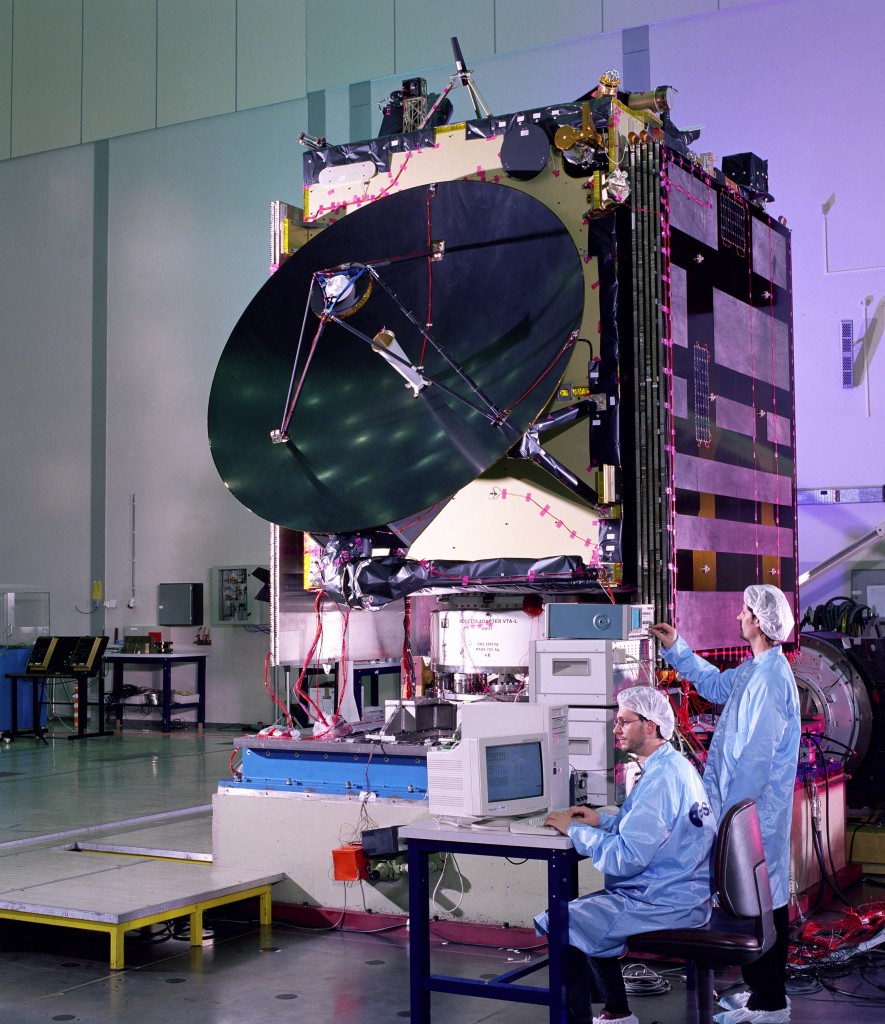
The 67P/Churyumov–Gerasimenko comet captured in 3D printed plastic to assist ESA scientists identify a landing site. Courtesy of Sculpteo.
Latest News
October 23, 2014
Mankind has continued its exploration of the stars in much quieter ways than the early flash and dazzle of trips to the moon or dogs in space. Our unmanned spacecraft zip silently through space en route to rendezvous’ with planets, the edge of the solar system, or, in this case, a meeting with a comet.
It was 20 years ago when the European Space Agency (ESA) decided to study a comet. Eventually comet 67P/Churyumov–Gerasimenko (67P/C-G) was selected for the honor, and the ESA began operations to design and launch a spacecraft and landing craft to study it. These efforts led to the Rosetta spacecraft and Philae lander, which were launched in 2004.
 The Rosetta spacecraft being readied for its historic flight. Courtesy of the ESA.
The Rosetta spacecraft being readied for its historic flight. Courtesy of the ESA.The comet ESA selected couldn’t be directly reached from Earth. In order for Rosetta to navigate to its destination, it required a flyby of Mars to slingshot itself deeper into space on the proper trajectory. Rosetta’s long journey has come to an end at last, and it is currently orbiting 67P/C-G, snapping pictures and gathering scientific data.
The next phase of the mission requires finding a potential landing zone for Philae. Rosetta has taken enough images of the comet for ESA to build a 3D digital model. Scientists studied the digital model over and over on screen before deciding to ask Sculpteo to 3D print a physical version.
 The 67P/Churyumov–Gerasimenko comet captured in 3D printed plastic to assist ESA scientists identify a landing site. Courtesy of Sculpteo.
The 67P/Churyumov–Gerasimenko comet captured in 3D printed plastic to assist ESA scientists identify a landing site. Courtesy of Sculpteo.“Having a physical object in our hands, to hold, observe and show definitely helped us make our decision. Even if you have a good imagination, it’s always easier to plan the journey when you have the 3D print on hand,” said Philippe Gaudon, Centre National d’Etudes Spatiales project manager of the Rosetta mission. “The public gets a better understanding of the project with a 3D print, the project becomes concrete.”
The ESA ordered two models from Sculpteo, and has used the 3D printed miniature comets to select two potential landing sites for the Philae. ESA scientists had previously relied on plaster versions of the comet, and voiced their appreciation for the speed and accuracy of 3D printing.
“Several years ago, when we scanned Steins and Lutetia asteroids, we ordered physical versions of it made through manual plaster molding,” said Gaudon. “But it was definitely less precise than the print we got for 67P/Churymov-Gerasimenko. It (3D printing) was also a lot faster: we got the print exactly one week after we uploaded it on Sculpteo’s website.”
Below you’ll find a short video about the ESA’s mission to comet 67P/C-G.
Source: Sculpteo
Subscribe to our FREE magazine, FREE email newsletters or both!
Latest News
About the Author
John NewmanJohn Newman is a Digital Engineering contributor who focuses on 3D printing. Contact him via [email protected] and read his posts on Rapid Ready Technology.
Follow DE





